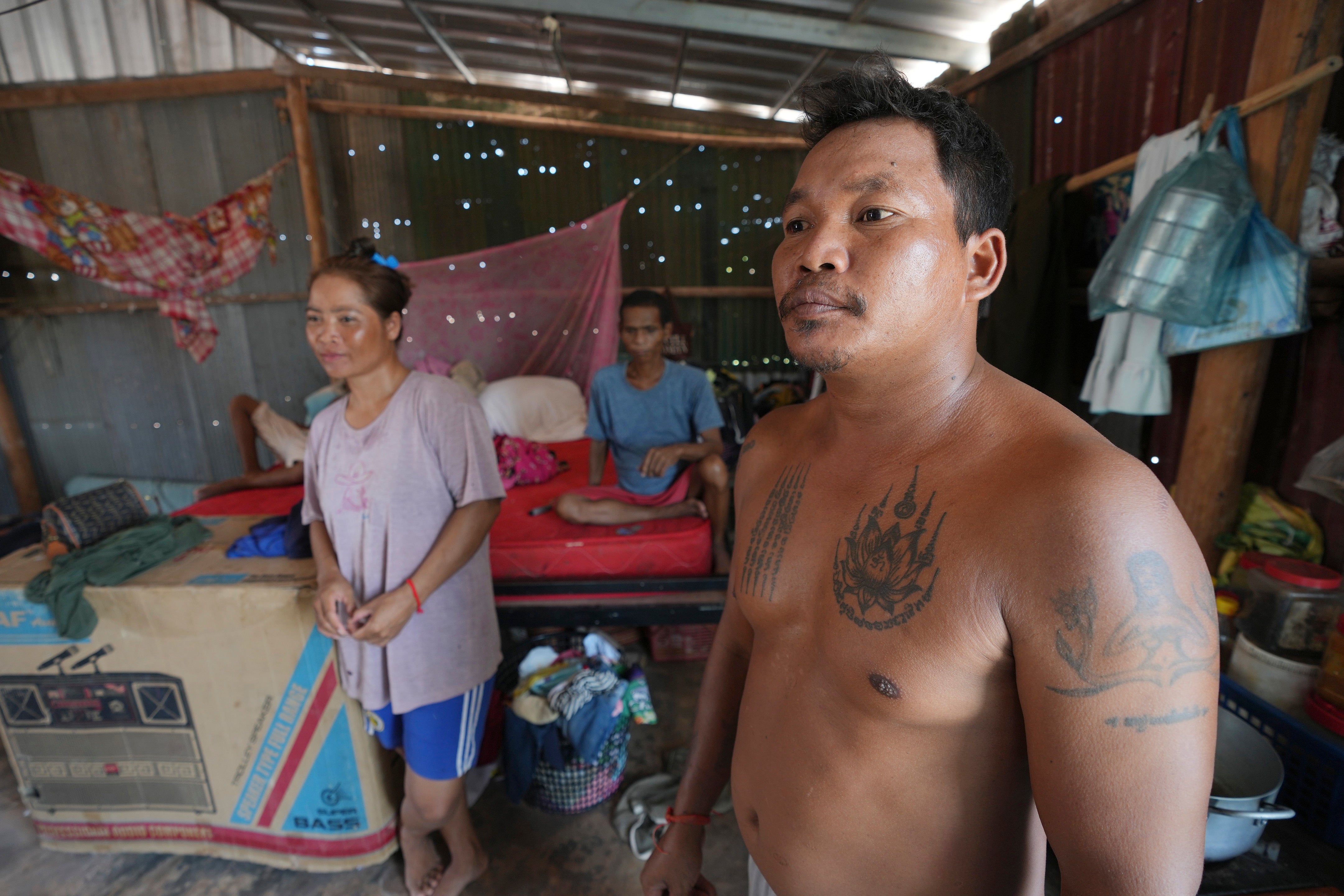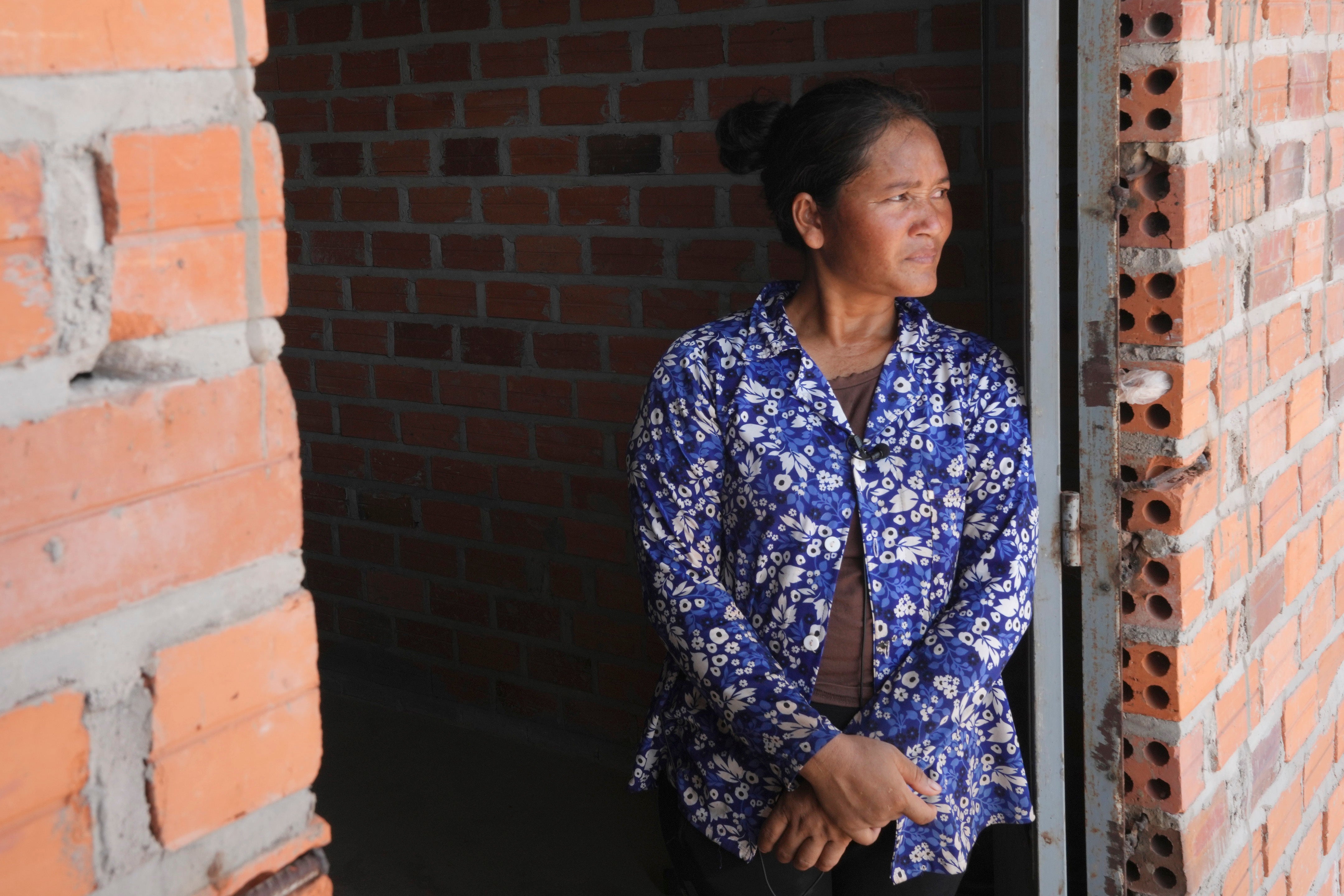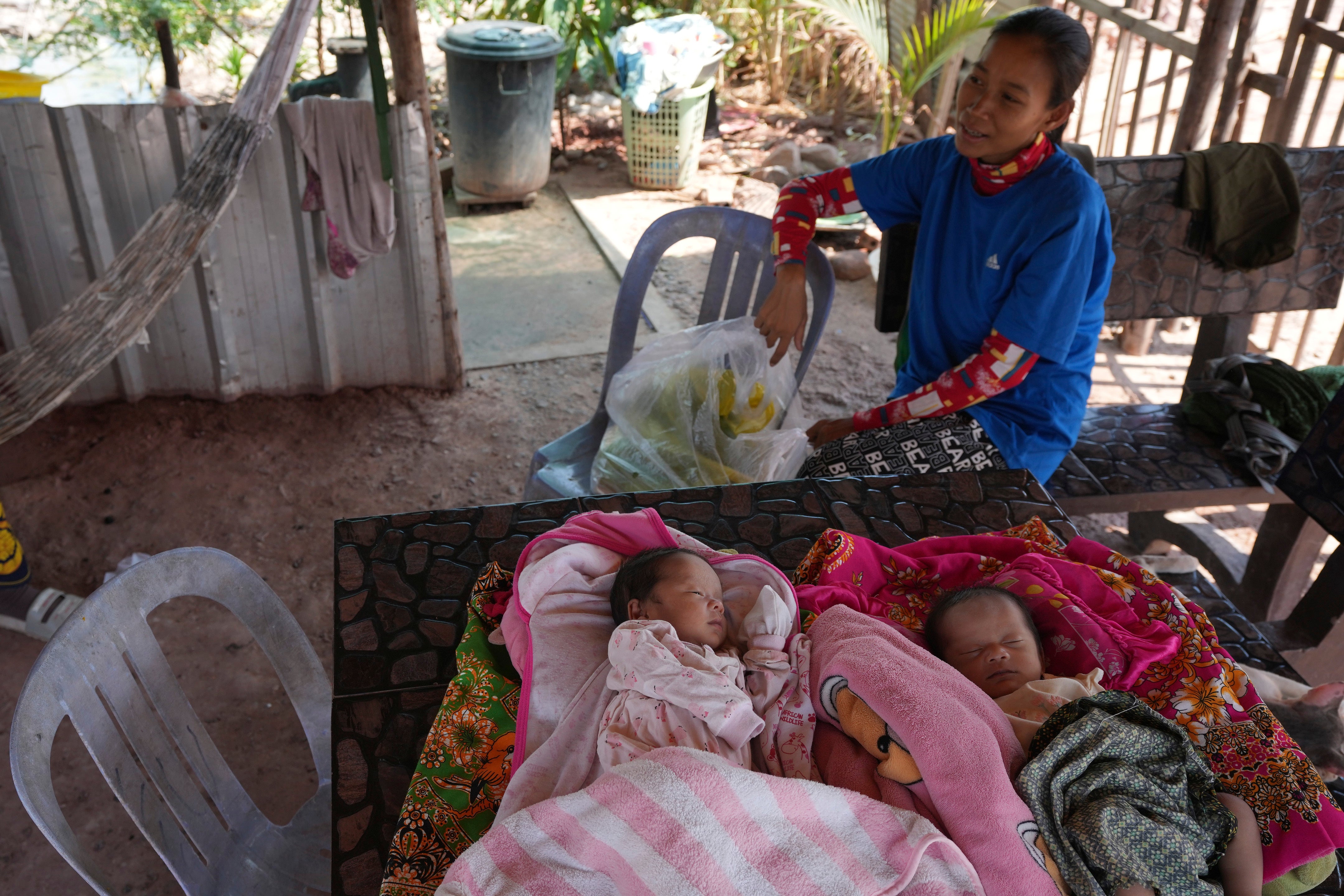Questions over Cambodia’s relocation of thousands from the world’s largest archaeological site
Amnesty questioned how voluntary the relocations actually were, saying many were threatened or coerced

Your support helps us to tell the story
From reproductive rights to climate change to Big Tech, The Independent is on the ground when the story is developing. Whether it's investigating the financials of Elon Musk's pro-Trump PAC or producing our latest documentary, 'The A Word', which shines a light on the American women fighting for reproductive rights, we know how important it is to parse out the facts from the messaging.
At such a critical moment in US history, we need reporters on the ground. Your donation allows us to keep sending journalists to speak to both sides of the story.
The Independent is trusted by Americans across the entire political spectrum. And unlike many other quality news outlets, we choose not to lock Americans out of our reporting and analysis with paywalls. We believe quality journalism should be available to everyone, paid for by those who can afford it.
Your support makes all the difference.It’s been more than a year since Yem Srey Pin moved with her family from the village where she was born on Cambodia’s Angkor UNESCO World Heritage site to Run Ta Ek, a dusty new settlement about 25 kilometers (15 miles) away.
Hers is one of about 5,000 families relocated from the sprawling archaeological site, one of Southeast Asia’s top tourist draws, by Cambodian authorities in an ongoing program that Amnesty International has condemned as a “gross violation of international human rights law.” Another 5,000 families are still due to be moved.
The allegations have drawn strong expressions of concern from UNESCO and a spirited rebuttal from Cambodian authorities, who say they’re doing nothing more than protecting the heritage land from illegal squatters.
Yem Srey Pin’s single-room home is a far cry better than the makeshift tent she lived in with her husband and five children when they first arrived, which did little to protect from the monsoon rains and blew down in the winds.
And their 600-square-meter (about 6,500 square foot) property is significantly bigger than the 90-square-meter (about 1,000 square foot) plot they occupied illegally in the village of Khvean on the Angkor site.
But the 35-year-old is also in debt from building the new house. Her husband finds less construction work nearby and his wages are lower, and there are no wild fruits or vegetables she can forage, nor rice paddies where she can collect crabs to sell at her mother’s stand.
“After more than a year here I haven’t been able to save any money and I haven’t earned anything,” she said.

The Angkor site is one of the largest archaeological sites in the world, spread across some 400 square kilometers (155 square miles) in northwestern Cambodia. It contains the ruins of Khmer Empire capitals from the 9th to 15th centuries, including the temple of Angkor Wat.
When it was inscribed as a World Heritage Site in 1992, it was named a “living heritage site” whose local population observed ancestral traditions and cultural practices that have disappeared elsewhere.
Still, UNESCO at the time noted that Angkor was under “dual pressures” from some 100,000 inhabitants in 112 historic settlements who “constantly try to expand their dwelling areas,” and from encroachment from the nearby town of Siem Reap.
Cambodia’s answer was a plan to entice the 10,000 families illegally squatting in the area to resettle at Run Ta Ek and another site, as well as to encourage some from the 112 historic settlements to relocate as their families grow in size.
“The number of people were on the rise, including those coming illegally,” said Long Kosal, spokesperson for the Cambodian agency known as APSARA that’s responsible for managing the Angkor site. “What we did was that we provided an option.”
Cambodia began moving people to Run Ta Ek in 2022, giving those who volunteered to leave their homes in the Angkor area plots of land, a two-month supply of canned food and rice, a tarp and 30 sheets of corrugated metal to use to build a home. Benefits also included a Poor Card, essentially a state welfare program giving them around 310,000 riel (about $75) monthly for 10 years.
In a November report, Amnesty questioned how voluntary the relocations actually were, saying many people they interviewed were threatened or coerced into moving and that the relocations were more “forced evictions in disguise.”
The rights group cited a speech from former Prime Minister Hun Sen in which he said people “must either leave the Angkor site soon and receive some form of compensation or be evicted at a later time and receive nothing.”
Amnesty also noted Hun Sen’s track record, saying that under his long-time rule Cambodian authorities had been responsible for several forced evictions elsewhere that it alleged “constituted gross violations of human rights.” It said Run Ta Ek — with dirt roads, insufficient drainage, poor sanitation and other issues — did not fulfil international obligations under human rights treaties to provide people adequate housing.

That has now changed: Homes with outhouses have been built, roads paved, and sewers installed. Primitive hand pumps made of blue PVC piping provide water, and electricity has been run in.
There’s a school, a health center, a temple; bus routes were added, and a market area was built but is not yet operating, Long Kosal said.
But Amnesty maintains there are major concerns.
Among other things, families have had to take on heavy debt to build even basic houses, and there is little work to be found, said Montse Ferrer, the head of Amnesty’s research team investigating the Angkor Wat resettlements.
“They had a clear source of income at the time — tourism — but also other sources of income linked to the location at Angkor," she said. "They are now at least 30 minutes away from the site and can no longer access these sources.”
Following Amnesty’s scathing report, UNESCO moved up the timeline for Cambodia’s submission of its own report on the state of conservation at the Angkor site, specifically asking for the allegations to be addressed.
In that report, submitted to UNESCO in March, Cambodia said it had not violated any international laws with the relocations, saying it was only moving people involved in the “illegal occupation of heritage land” and that in Run Ta Ek many were now property owners for the first time in their lives.
UNESCO said it would not comment on the situation until it has been able to analyze Cambodia’s response.
It referred The Associated Press to previous comments from Lazare Eloundou Assomo, director of the UNESCO World Heritage Center, who stressed the agency had “always categorically rejected the use of forced evictions as a tool for management of World Heritage listed sites.”
Yem Srey Pin said even though Run Ta Ek has slowly improved since she arrived in February 2023, and her new home will be paid off fairly soon, she’d rather return to her village if it were possible.
But with almost all of the village’s 400 families moving out, Yem Srey Pin says there’s nothing left for her there.
“I can’t live in my old village alone,” she said.